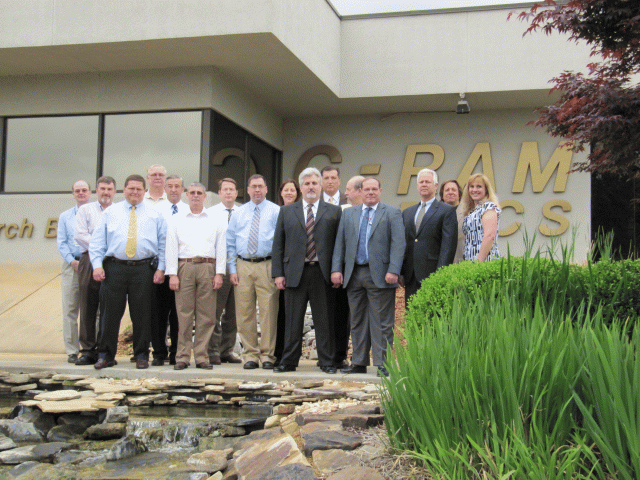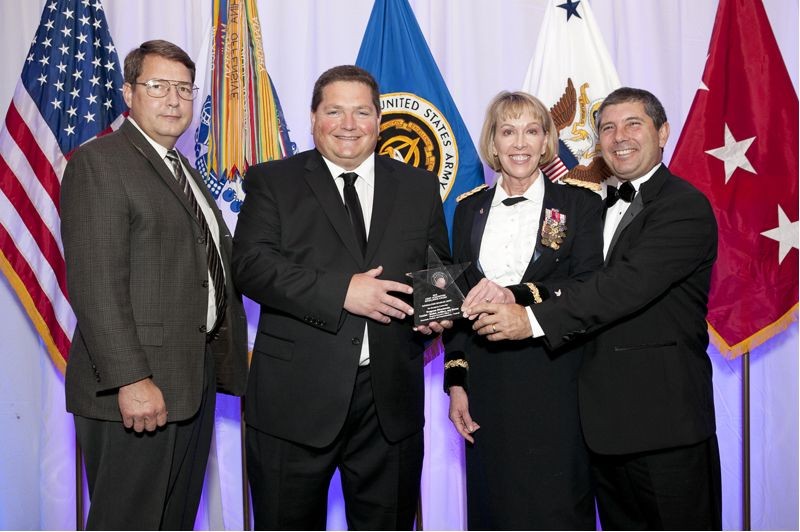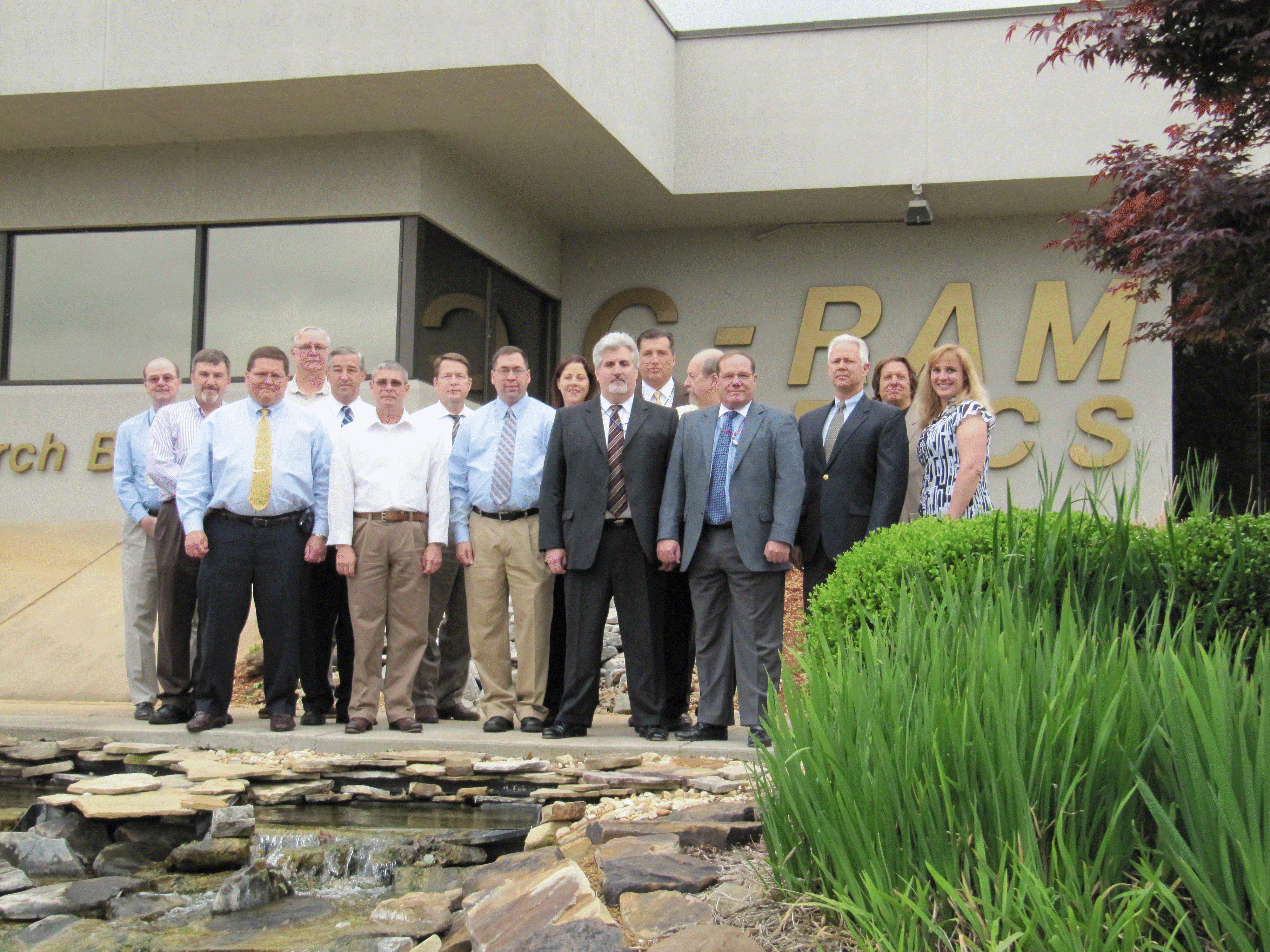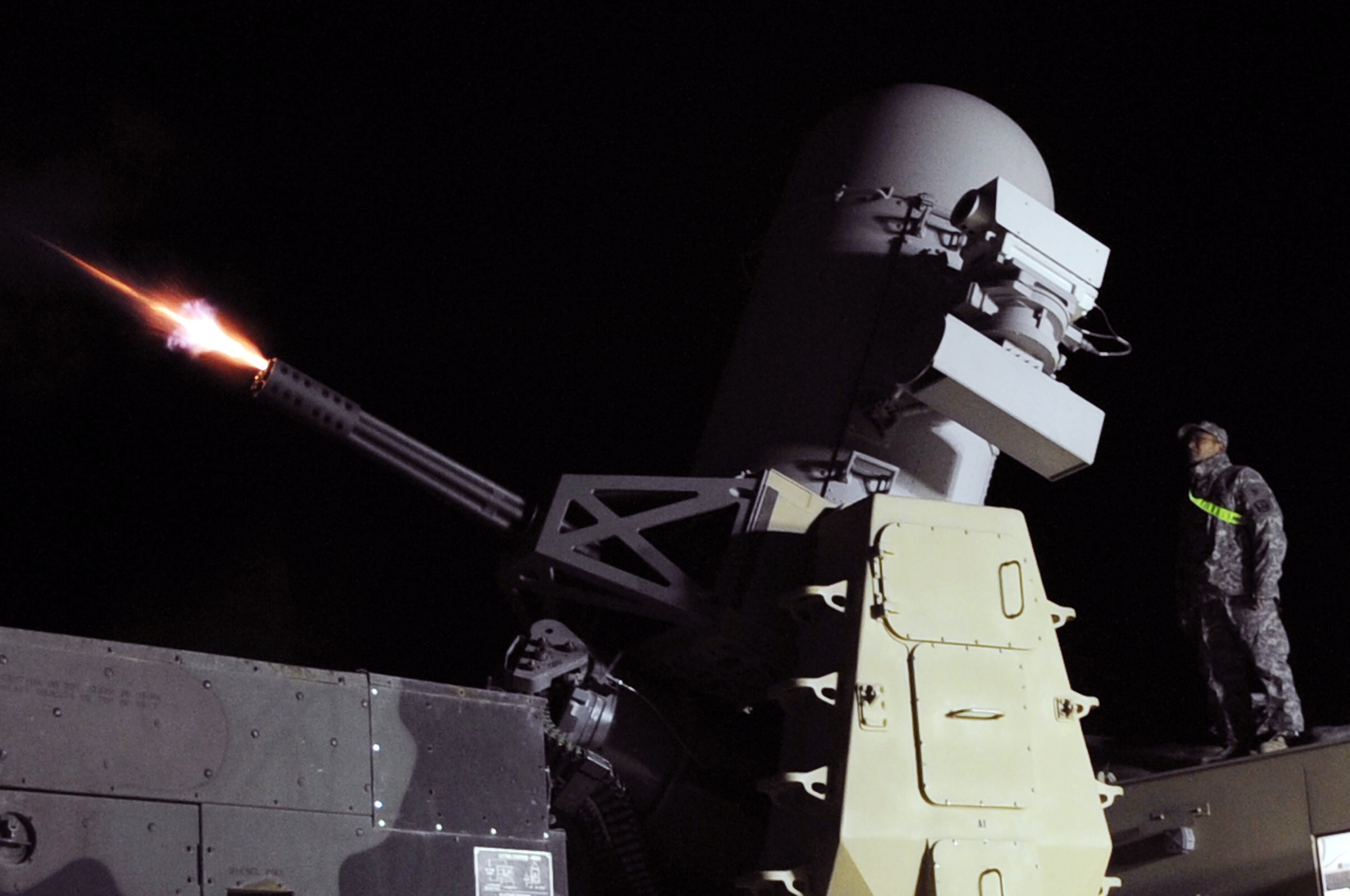Program Director Counter-Rockets, Artillery and Mortar (PD C-RAM) recently won a prestigious Army acquisition award for its implementation of an enhanced indirect fire (IDF) radar network in Iraq and for establishing the first ever Joint Single Integrated Air Picture (SIAP).
"I think the two efforts just scratched the surface of what we can do quickly with the systems we have," said Mike Van Rassen, PD C-RAM. "They have some major implications for the future."
PD C-RAM accepted the Information Enabled Army Award, one of the sub-categories for the 2010 Army Acquisition Excellence Awards, at the U.S. Army Acquisition Corps Annual Awards Ceremony on Oct. 24 at the Westin Hotel in Alexandria, Va.
In its effort to create this expanded radar network, PD C-RAM successfully tied multiple radars and sensors together across existing C-RAM networks and later with Army tactical networks to provide over-lapping coverage of forward operating bases (FOB). The team tied more than 40 different sensors together to create a "Super FOB."
"This was the first time we linked across the FOBs, which has proven to be incredibly successful from the standpoint of increasing the performance of warning across the battlefield," Van Rassen said.
The threat tactics change within the ebb and flow of the fight and Warfighters change with them. The implementation of the enhanced IDF radar network has aided in saving many lives by facilitating the ability to warn people of incoming fires so they have time to take cover.
From the inception of C-RAM, the directorate has been able to network radars within a FOB, but this was first time they were able to connect various external radars together to form a "Super FOB," Van Rassen said. A recent effort tied together more than 90 square kilometers, including six major FOBs and all the radars that they entailed.
"This took it to the next level," Van Rassen said. "If a radar is 10s of kilometers away and it's tied into the network, you're still able to get the right information."
"We were able to get the radars working in concert to provide a better detection rate that allows us to more effectively warn," Van Rassen said.
Deployed radars vary in capability, with some radars having longer range. Many events have occurred where the radars at the strike location did not detect the event, yet it was picked up by a radar at another location. The detecting radars in the network are now able to correlate and provide warnings, which is a huge operational benefit for the Army, he added.
"It's all IP-based, all wireless, and the architecture is done in a way that is counter-intuitive; it is about limiting data," Van Rassen said. "It's about the right information at the right time to the right place to affect a military outcome."
PD CRAM worked closely with the signal units in theater to implement the Super FOB, and the directorate continues to maintain and operate the network and architecture.
In a second effort, PD C-RAM used the same C2 system it used for the target detection to detect aircraft and improve the air portion of the common operating picture by providing the first true joint Single Integrated Air Picture (SIAP).
Most sensors, weapons and C2 devices employed in air and missile defense operate as separate entities. C-RAM attacked this stovepiped structure by bringing the "sensors and shooters" together within the same architectural environment. By linking all radar systems operating in Iraq into one Joint service communications center, PD C-RAM improved airspace deconfliction, as well as airspace sense and warning, while employing and improving Air Force digital close air support.
SIAP enhances situational awareness by marrying multiple Joint feeds that are all detecting the same aircraft, enabling a single aircraft to appear on one screen as one aircraft, Van Rassen said. The effort was accomplished as part of a fragmentary order, "so it was a military operation as opposed to a PM fielding a widget," he said.
"This (SIAP) enabled all Army Sentinel radars to share low-flying radar data," said Air Force Col. Vinnie Savino, Commander of the 368th Expeditionary Air Support Operations Group and MNC-I air liaison officer. "More importantly, this integrated air picture gives enhanced situational awareness to make more informed decisions on the most effective distribution of CAS (Close Air Support) assets in the demanding Iraqi theater."
PD C-RAM introduced system upgrades for counter-rocket, artillery, mortar and air defense air space management systems. It worked with theater divisions along with the Joint community in bringing a relative/tactical Single Integrated Air Picture (SIAP) to Iraq. Long hours were spent training personnel and configuring systems to bring them all on line under the SIAP architecture. SIAP will continue to be maintained and supported by PD C-RAM.






Social Sharing